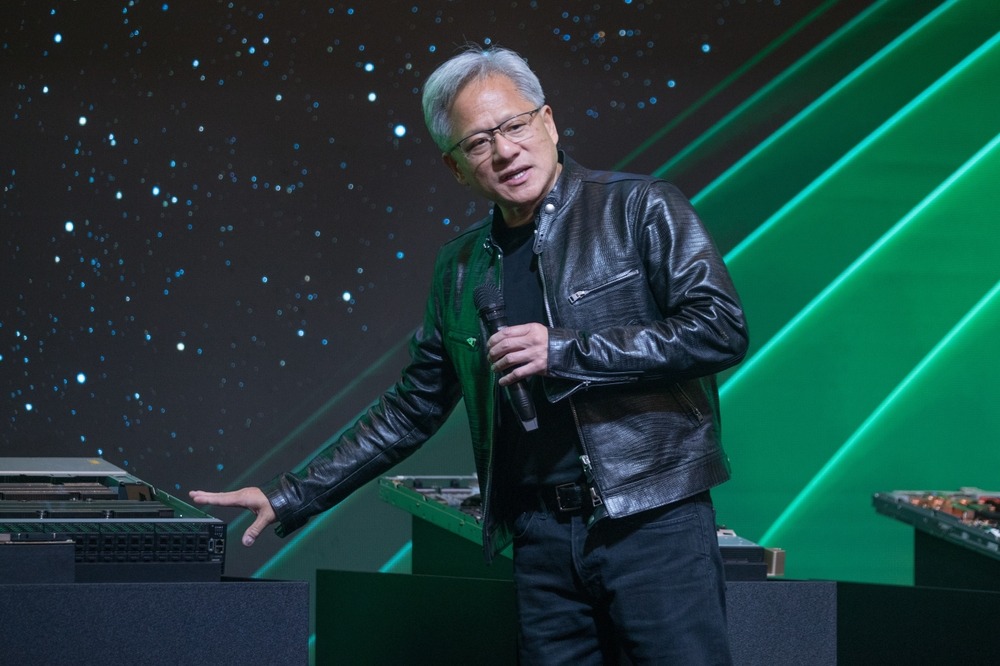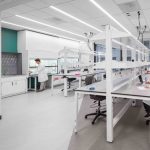Nvidia CEO Jensen Huang: If I Were 20 Again, I’d Study This in College.
Nvidia CEO Jensen Huang just offloaded another $12.94 million worth of shares, according to a July 18 filing with the SEC — part of a pre-arranged Rule 10b5-1 plan that has allowed him to gradually sell up to 6 million shares. So far in 2025, he’s sold nearly $190 million worth. Despite the eye-popping numbers, Huang remains Nvidia’s largest individual shareholder, showing continued confidence in the company’s future.
The sale comes as competition in the AI chip space intensifies. FuriosaAI, a rising startup based in Seoul, just signed its first major deal with LG AI Research, which will use its new RNGD (Renegade) chip to power large language models. It’s a major breakthrough in a market long dominated by Nvidia, and a signal that the post-ChatGPT AI boom is spawning serious global challengers.
From Physics to AI: What Jensen Huang Would Study Today
As Nvidia faces growing global competition and CEO Jensen Huang offloads millions in stock under a planned sale, the man behind the world’s most valuable tech company is also offering advice for the next generation. If he were 20 years old today, Huang says he wouldn’t study computer science or software engineering at all.
Instead, he’d dive headfirst into physical sciences — the field that explores the fundamental laws of the universe, from gravity and electromagnetism to quantum mechanics and the behavior of matter. It’s a telling signal of where he believes the next wave of innovation is headed.
And Huang knows a thing or two about future-shaping disciplines. Under his leadership, Nvidia has become the most valuable company in the world, with a staggering $4.073 trillion market capitalization as of July 2025.
Nvidia creates high-performance computer chips (GPUs) and the supporting software that powers everything from realistic gaming graphics and AI development to data centers and self-driving cars. Its hardware is at the heart of today’s artificial intelligence revolution.
“More Physical Sciences Than Software Sciences”
During a recent trip to Beijing, Huang was asked a striking question by a journalist:
“If you are a 22-year-old version of Jensen [who] just graduated today in 2025 but with the same ambition, what would you focus on?”
His answer:
“For the young, 20-year-old Jensen, that’s graduated now, he probably would have chosen ... more of the physical sciences than the software sciences.”
He added that he graduated early, at age 20, but if he were starting today, his path would shift toward disciplines like physics, chemistry, astronomy, and earth sciences — signaling where he believes the next wave of innovation will be born.
From Denny’s to a $4 Trillion Powerhouse
Huang earned his electrical engineering degree from Oregon State University in 1984, followed by a master’s from Stanford in 1992. In 1993, he and fellow engineers Chris Malachowsky and Curtis Priem founded Nvidia over a meal at Denny’s in San Jose, California.
Originally known for powering gaming graphics, Nvidia has evolved into the world’s AI infrastructure backbone, with explosive demand from companies building generative models, autonomous systems, and data-hungry applications.
Why Physical Sciences Matter in the AI Era
While Huang didn’t elaborate in Beijing on why he’d choose physics over programming, his recent speeches make the reasoning clear: Nvidia is betting big on the next wave of AI — what Huang calls Physical AI.
At the Hill & Valley Forum in Washington, D.C., earlier this year, Huang traced the evolution of artificial intelligence through several phases.
“Modern AI really came into consciousness about 12 to 14 years ago, when AlexNet came out and computer vision saw its big, giant breakthrough,” he said.
That breakthrough — known as Perception AI — allowed machines to understand images. Next came Generative AI, where models could produce text, images, music, and code. Now, we’ve entered the age of Reasoning AI.
“We’re now in this age called ‘Reasoning AI’... where you now have AI that can understand, it can generate, [and] solve problems and recognize conditions that we’ve never seen before,” Huang said.
This era has given rise to agentic AI — essentially “digital workforce robots” capable of solving complex, unseen challenges. But that’s not the end of the road.
The Future: Physical AI and Robotics
“The next wave requires us to understand things like the laws of physics, friction, inertia, cause and effect,” said Huang.
This next generation — Physical AI — is focused on reasoning about the physical world: how to grip an object without crushing it, how a ball will roll, how to detect an unseen pedestrian behind a vehicle. When this is embedded in machines, it becomes robotics.
“And when you take that physical AI and then you put it into a physical object called a robot, you get robotics,” Huang said. “This is really, really important for us now, because we’re building plants and factories all over the United States.”
As the U.S. faces widespread labor shortages, Huang envisions Nvidia-powered robotics helping to automate entire industries.
“Hopefully, in the next 10 years, as we build out this new generation of plants and factories, they’re highly robotic and they’re helping us deal with the severe labor shortage that we have all over the world.”
Where to Study Physical Sciences: Top Global Institutions Leading the Future
For students inspired by Huang’s advice to explore physical sciences, the world’s leading institutions offer unmatched opportunities to dive deep into the laws of nature and fuel the next wave of technological breakthroughs.
Top destinations include MIT, renowned for its pioneering work in physics and nanotechnology, and Stanford University, which blends physical science with cutting-edge AI and robotics.
The University of Cambridge carries a historic legacy in theoretical physics, while Harvard excels in everything from astrophysics to biophysics. Meanwhile, ETH Zurich stands out in Europe for its excellence in quantum research and engineering. These institutions are at the forefront of shaping the scientific minds who will drive the future Huang envisions.
Curious About Net Worth? Finance Monthly Has You Covered
From billionaires and business leaders to your favorite actors, athletes, and entrepreneurs — we track the numbers behind the names. Explore our full collection of net worth profiles to stay up to date on who’s rising, who’s spending, and how fortunes are made and managed in 2025.
👉 Browse all our latest net worth stories HERE.
FAQs: Jensen Huang and the Future of Physical Science
What does Jensen Huang mean by "physical sciences"?
Physical sciences refer to fields that study non-living systems and the fundamental laws of nature, such as physics, chemistry, astronomy, and earth science. These disciplines explore how matter and energy behave — knowledge that’s increasingly essential for advancing technologies like robotics, autonomous systems, and AI-driven hardware.
Why would Jensen Huang choose physical science over computer science today?
While Huang built his empire on software and semiconductors, he believes the next frontier of innovation lies in understanding the physical world. From AI-driven robots to self-driving cars, the ability to reason about physical forces like friction, inertia, and motion is becoming crucial — and that’s the domain of physical science.
How is physical science connected to the future of AI and robotics?
According to Huang, AI is evolving from generating data to interacting with the real world — a stage he calls Physical AI. To build intelligent machines that can safely grip, move, or respond to their surroundings, engineers need a deep understanding of physical principles. This makes physical science a vital foundation for tomorrow’s AI leaders.














